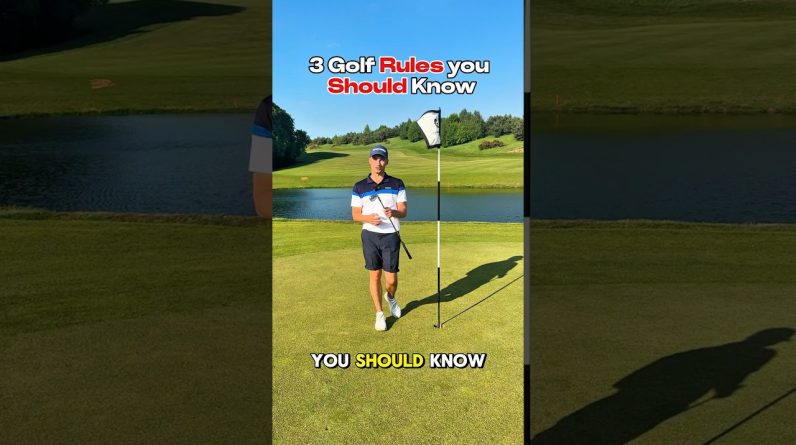The Truth About Golf grips – Which One Should I Choose? #golfequipment
Understanding the Importance of Golf Grips
Golf grips are one of the most overlooked but critical components of your golf equipment. They provide the primary contact point between you and the club. An ideal golf grip enhances control,comfort,and consistency during swings,which can ultimately lower your score on the course.
Choosing the right golf grip can feel overwhelming with all the options available, but understanding the basics will ensure you find one that suits your playing style, hand size, and the typical weather you play in.
Types of Golf Grips
Golf grips come in several types — each designed to fulfill different needs. Here’s a breakdown:
| Grip Type | Description | Best For | pros | Cons |
|---|---|---|---|---|
| Rubber (Standard) | Conventional grip made from synthetic rubber. | Most golfers, beginners to advanced | Durable, affordable, good traction | Can be slippery when wet |
| Corded | Contains thin cord layers for enhanced grip. | Wet or humid conditions, sweaty hands | Excellent traction, firm feel | Less agreeable on dry days |
| Alignment Grips | Feature visual markers to help hand placement. | Players wanting consistent hand position | Improves swing consistency | Less cushioning |
| Oversize/Midsize | Thicker grip diameter than standard. | Golfers with arthritis or large hands | Reduces tension, easier on hands | May reduce club feel for some players |
| Wrap/Leather | Premium leather or synthetic wrap. | Traditional players seeking feel and style | Premium touch, stylish look | Less durable, needs maintenance |
Factors to Consider When Choosing a Golf Grip
Picking the right golf grip isn’t just about style or price. Consider these practical factors:
- Hand Size: Use thicker grips if your hands are large or if you prefer a lighter hold, and thinner grips if you have smaller hands or like more control.
- Weather Conditions: Corded grips excel in wet or humid conditions. Rubber grips work well in dry climates.
- Feel and Comfort: Softer grips provide more cushioning but may wear out faster. firmer grips give better feedback but less comfort.
- Playing Frequency and Maintenance: Frequent players might want durable grips that require less upkeep, while casual golfers can explore softer, high-performance materials.
Benefits of Upgrading Your Golf Grips
Many golfers underestimate how an upgraded golf grip can impact their game. Here are some benefits:
- Improved Control: Grips with better traction reduce club twisting on swings.
- Enhanced comfort: Reduces hand fatigue, enabling longer practice sessions and rounds.
- Consistency: Helps maintain proper hand placement for more repeatable swings.
- Injury Prevention: Proper grip size and material reduce stress on hands and wrists.
- Better Weather Performance: Specialized grips boost performance in wet or humid conditions.
Practical Tips to Maintain Your Golf Grips
Even the best golf grips need some care. Keep your grips performing well and lasting longer with these simple tips:
- Regular Cleaning: Clean grips with mild soap and water to remove dirt and oils.
- Avoid Harsh Chemicals: Avoid solvents that can degrade rubber or leather.
- Inspect Frequently: Check for wear and replace grips when they feel slick or cracked.
- Store Properly: keep your clubs in a cool, dry place away from direct sunlight.
Personal experience & Case Study: how Changing My Golf Grip Improved My Game
As an avid golfer, I struggled for years with inconsistent shots and hand tension. After switching from a standard rubber grip to an oversize corded grip, I noticed immediate improvements:
- My grip tension decreased, reducing fatigue in long rounds.
- I had better control in damp weather, especially on morning tee times.
- Consistent hand placement led to more accurate shots and tighter dispersion.
This simple upgrade gave me confidence and helped me shave a few strokes off my handicap.
Common Golf Grip Myths Debunked
Myth: “Bigger grips always decrease accuracy.”
Truth: Oversize grips can help reduce tension and prevent overactive hands, which actually improves consistency for many players.
Myth: “Leather grips are outdated.”
Truth: Leather grips remain a favorite for players who prioritize feel and aesthetic over durability, and modern treatments have improved their longevity.
Myth: “Grip choice doesn’t matter much.”
Truth: The wrong grip can cause tension, slip during the swing, or poor contact, severely affecting your performance.
How to Know When It’s Time to Replace Your Golf Grips
Even the best grips wear out over time. Here are signs it’s time for a replacement:
- Grip surface feels smooth or slick, especially when wet.
- Visible cracks, splits, or hard spots.
- Loss of tackiness you once had.
- Discoloration or hardened texture.
Pro Tip: Most golfers should replace grips every 40 to 60 rounds or once a year if playing frequently.
Summary Table: Choosing Golf Grips based on Your Needs
| Need | Recommended Grip Type | Why? |
|---|---|---|
| Wet/Humid Conditions | Corded grips | Extra traction prevents slipping |
| Hand Pain/Arthritis | oversize or Midsize grips | Reduce hand tension and fatigue |
| Beginners | Standard Rubber grips | Durable, affordable, easy to maintain |
| Experienced Players | Alignment grips or Premium Wraps | Improve consistency and feel |
| Traditionalists | Leather grips | Classic feel and aesthetic |







